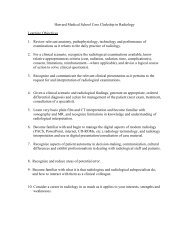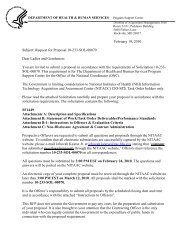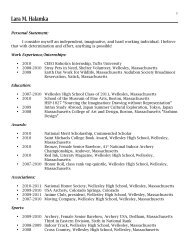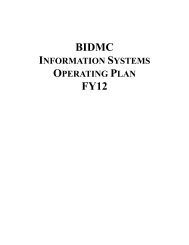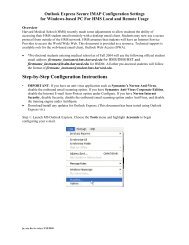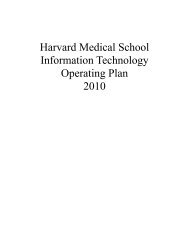SIMULATION CASEBOOK - MyCourses
SIMULATION CASEBOOK - MyCourses
SIMULATION CASEBOOK - MyCourses
Create successful ePaper yourself
Turn your PDF publications into a flip-book with our unique Google optimized e-Paper software.
Gilbert Program in Medical Simulation<br />
Simulation Casebook<br />
Harvard Medical School Draft of the 1 st edition (2011), updated 3/2/12<br />
***Insulin (one-time dose) with no fluids: If one time dose of insulin given without IV fluids, patient<br />
continues to worsen:<br />
HR BP Temperature O 2 Sats (RA) RR<br />
145 82/60 37.5 96% 30<br />
***Insulin drip: If insulin drip given with fluids, patient shows more significant improvement:<br />
HR BP Temperature O 2 Sats (RA) RR<br />
110 100/60 37.5 96% 20<br />
Once appropriate initial treatment provided, can provide one hour laboratory studies showing K 3.2,<br />
glucose 350. Students are expected to add potassium to IV fluids, and to request hourly lab draws, with<br />
plan to add glucose when level < 250.<br />
VI.<br />
VII.<br />
Instructor Notes<br />
A. Tips to keep scenario flowing<br />
1. If students are unsure of pathology, prompting can come in form of a primary care<br />
physician calling to check in on their patient.<br />
2. laboratory studiesIf supplemental O 2 is not provided, nurse can verbalize concern as<br />
patient becomes increasingly dyspneic<br />
B. Scenario programming<br />
1. Optimal management path:<br />
O 2 /IV/monitor<br />
History and physical examination<br />
Appropriate lab workup: CBC, BMP, blood gas, toxicology screen,<br />
urinalysis, hepatic panel, lactic acid level, lipase level, serum ketones<br />
Appropriate imaging: CXR, ECG<br />
Aggressive IV fluid resuscitation<br />
Initiate insulin drip<br />
Correct electrolyte imbalance<br />
Transfer patient to ICU<br />
2. Potential complications/errors path(s):<br />
Failure to administer IV fluids<br />
3. Program debugging: N/A<br />
Debriefing Plan<br />
A. Method of debriefing: Group with multimedia teaching materials<br />
B. Debriefing materials: See Appendix C<br />
C. Potential debriefing topics<br />
1. Team dynamics<br />
i. Leadership<br />
ii. Collaboration<br />
iii. Communication<br />
iv. Professionalism<br />
2. Didactic material<br />
i. Pathophysiology<br />
1. Type I vs. Type II Diabetes<br />
2. Pathophysiology of ketoacidosis: under low-insulin conditions<br />
(regardless of plasma glucose level) liver acts as if body is starving and<br />
metabolizes fats, producing ketone bodies/lowering blood pH<br />
62



